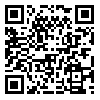Volume 3, Issue 1 (16 2004)
ijdld 2004, 3(1): 7-11 |
Back to browse issues page
Download citation:
BibTeX | RIS | EndNote | Medlars | ProCite | Reference Manager | RefWorks
Send citation to:



BibTeX | RIS | EndNote | Medlars | ProCite | Reference Manager | RefWorks
Send citation to:
Vakili R, Mahmoudi M, Ghasemi A. PREVALENCE OF THYROID AUTOANTIBODIES IN DIABETIC CHILDREN AND ADOLESCENTS IN MASHHAD. ijdld 2004; 3 (1) :7-11
URL: http://ijdld.tums.ac.ir/article-1-449-en.html
URL: http://ijdld.tums.ac.ir/article-1-449-en.html
Abstract: (8075 Views)
Diabetes mellitus is the commonest endocrine-metabolic disorder during the early years of life. As many as one in five of insulin-dependent diabetics may have thyroid antibodies in their sera, which is 2-20 times higher than the general population.
Methods: Tpo-ab, Tg-ab, TSH and HbAlC were measured in 48 children and adolescents with diabetes and compared with for sex/age-matched controls. Clinical data including sex, age at onset and duration of diabetes, family history and signs and symptoms of thyroid disorders were recorded. Statistical analysis was made using SPSS software.
Results: In diabetic group, twelve patients had positive thyroid autoantibodies Tg-ab was positive in ten and Tp-ab was positive in nine and both were positive in seven patients. The prevalence of thyroid antibodies in our study was 25% and in the control group, nobody had thyroid antibodies (P=0.006). Of the twelve patients with autoimmune thyroid disorders, three had hypothyroidism.
Conclusion: The prevalence of autoimmune thyroid disorders was not influenced by sex, age, duration of diabetes or HbAlc level. On the whole, nearly one-fourth of diabetic patients had thyroid antibodies, and annual thyroid antibodies investigation for these patients is suggested.
Methods: Tpo-ab, Tg-ab, TSH and HbAlC were measured in 48 children and adolescents with diabetes and compared with for sex/age-matched controls. Clinical data including sex, age at onset and duration of diabetes, family history and signs and symptoms of thyroid disorders were recorded. Statistical analysis was made using SPSS software.
Results: In diabetic group, twelve patients had positive thyroid autoantibodies Tg-ab was positive in ten and Tp-ab was positive in nine and both were positive in seven patients. The prevalence of thyroid antibodies in our study was 25% and in the control group, nobody had thyroid antibodies (P=0.006). Of the twelve patients with autoimmune thyroid disorders, three had hypothyroidism.
Conclusion: The prevalence of autoimmune thyroid disorders was not influenced by sex, age, duration of diabetes or HbAlc level. On the whole, nearly one-fourth of diabetic patients had thyroid antibodies, and annual thyroid antibodies investigation for these patients is suggested.
| Rights and permissions | |
 |
This work is licensed under a Creative Commons Attribution-NonCommercial 4.0 International License. |





